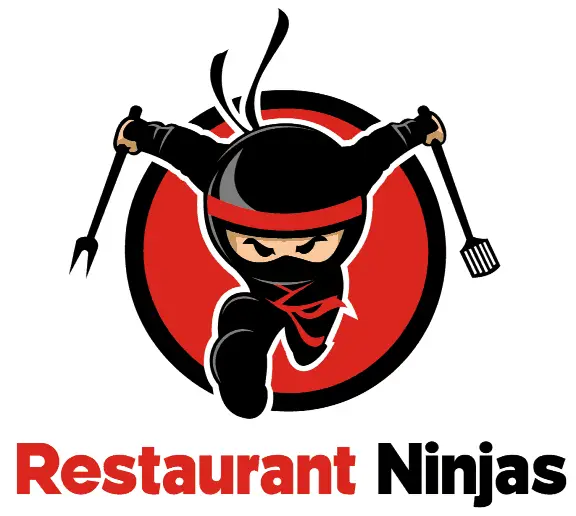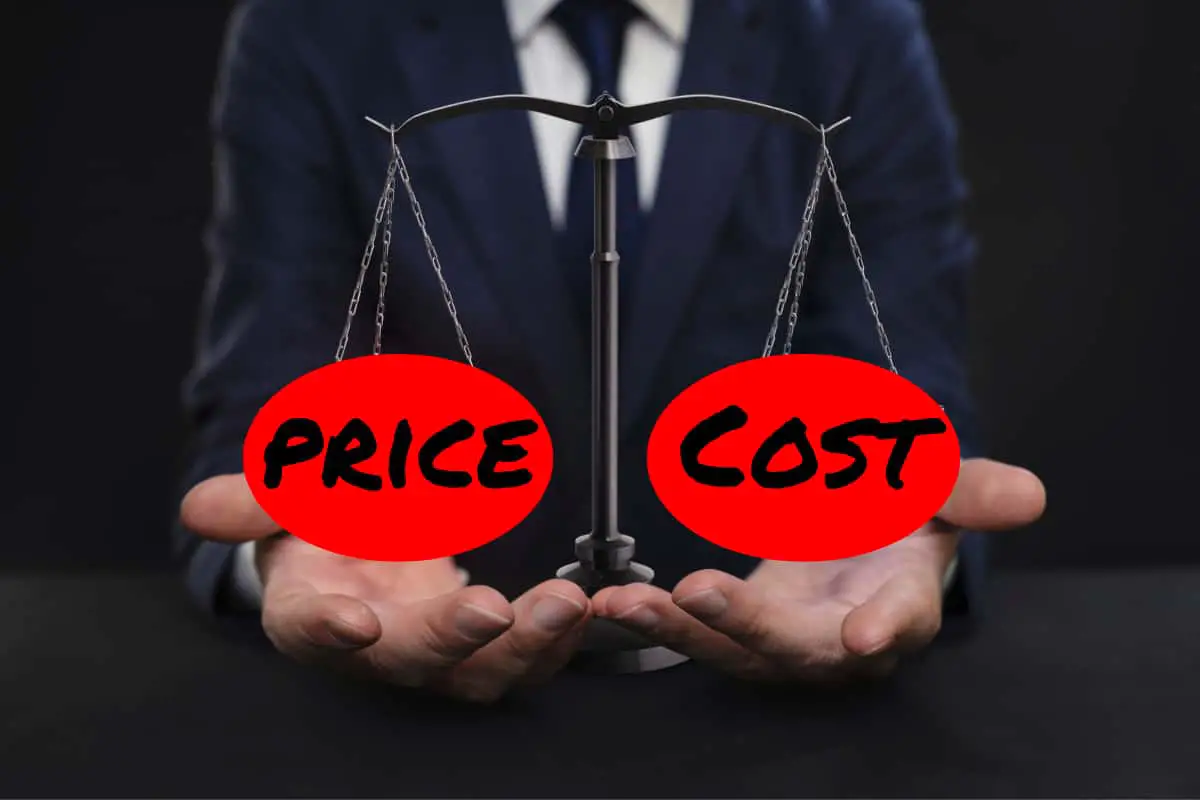Setting the initial prices for a restaurant menu is a balancing act of maximizing profitability while not pricing so high as to exceed your target customer’s perceived value and budgetary needs. Pricing affects people’s expectations, causing them to form an unconsciously biased opinion of your establishment based on prices.
How do you set restaurant menu prices? The best method to calculate menu prices in most cases is Market Minus Pricing. To calculate prices using this formula, you work backward from your target price to figure out the ideal recipe cost and then build the dish using ingredients that do not exceed that cost.
This might come as a surprise given the number of people that tout using your ingredient costs as the best (and often only) method to determine prices. Unfortunately, pricing based exclusively on ingredient cost often leads to an unbalanced menu with items that are far overpriced (think premium meats and seafood) and others that are far underpriced (like beverages).
While I recommend using Market Minus Pricing as your primary pricing method, the fact is that using just one approach to price every item on your entire menu can also be overly simplistic. A well-priced menu is built with a menu mix in mind and factors in various pricing methods. The best practice is using a combination of multiple approaches to determine the best price possible.
In this article, I am going to show you how to price menu items using each of the four different pricing models and explain why Market Minus Pricing is the best method for you to use.
Cost Plus Pricing
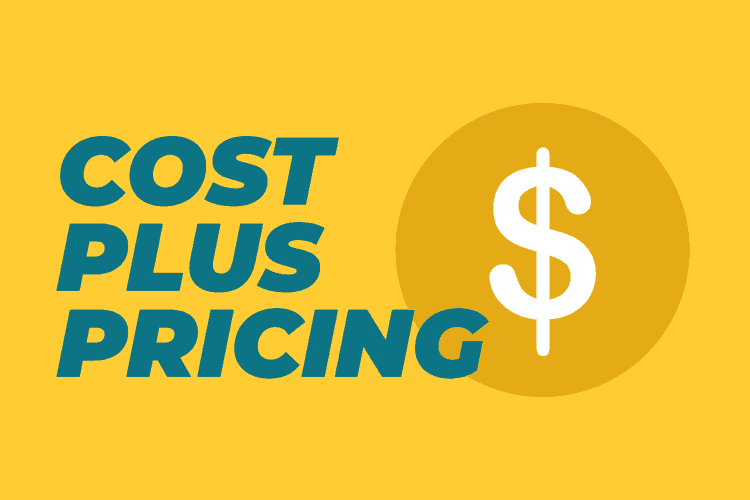
Cost Plus Pricing is the most well-known pricing method. This pricing model is used the most and widely acknowledged as the “right” way to determine prices thanks in part mostly to the myriad of restaurant consulting shows on The Food Network. This is NOT the way I recommend restauranteurs pricing their food. Let’s take a look at how to use this method and then why I recommend NOT to use it.
The Cost Plus Pricing Model works by first identifying your ideal food cost percentage. Most restaurants are in the 25 to 35 percent range. After that, add up the raw cost of all ingredients to the penny based on the portion size needed for the recipe. Now plug those numbers into the following formula:
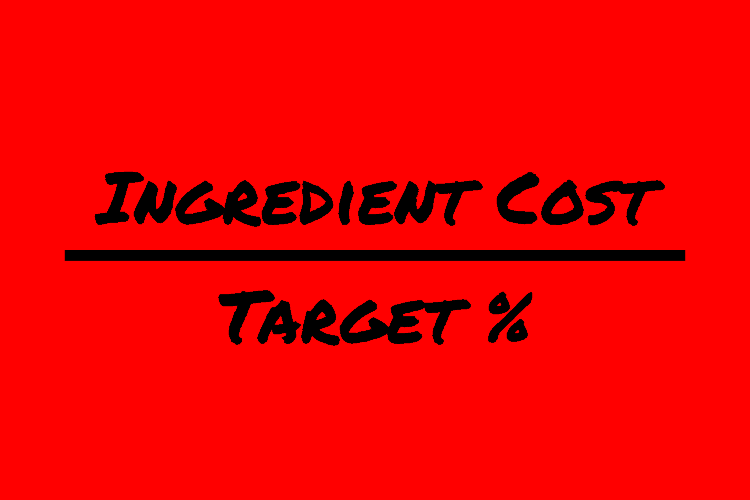
For example, let’s say you have a roasted red pepper panini that you want to serve at a 27% food cost. You would add up the cost of every single ingredient to determine the recipe cost first. Let’s say the ingredients add up to $3.22. Using the above formula, you would calculate a menu price of $11.93. Round that number up to an amount of either $11.99 or $12, and you have a price!
Another variation of this formula is to add in other costs to get a more accurate calculation for how much it costs to make the item. These costs can include expenditures like labor, carryout supplies, overhead, etc.
Trying to factor in exact labor and overhead makes calculations more complicated than they need to be and often leads to overpricing. Instead, consider the difficulty of the item overall and factor that in when deciding on the target percentage.
For example, dishes that require very minimal labor to prepare can be served at 20%, while recipes that require more preparation time would be served at 30%. These are just ballpark numbers, but it gives you an idea of what I am trying to illustrate.
Unless you are fine dining, delivery sales will probably be a big part of your business moving forward. Therefore, I suggest that you factor carryout supplies into the recipe cost for all items.
Some sources suggest an even more watered-down version of Cost Plus Pricing by advocating for simplicity using a 3x markup. If you insist on doing Cost Plus Pricing, I highly recommend you avoid this simple markup formula. Yes, marking your price up in this manner can work, but it takes away the flexibility of setting your own ideal food cost.
The numerous flaws with the Cost Plus Pricing method cause me to advise you to avoid it. First, starting your pricing by coming up with a target food cost out of thin air is a mistake.
Every restaurant is different, meaning every restaurant is going to have different needs for a target food cost. Your overhead and required labor have a big role in determining your target. Menu mix is going to play a significant role as well. You won’t know this until after you have already been open and have some sales history to review.
Food cost is also not the end all be all part of restaurant profitability. Prime cost (the cost of your food and labor combined) is all that matters in the end; what combination of food cost and labor you use to get there is not as important. Prime costs should be in the 55 to 60 percent range.
The second problem with this method is that it can cause you to underprice certain items. Unless the price is your only differentiating factor, this is stupid.
For example, pricing a pizza at $8 because you want to have a 25% food cost and ingredients cost $2 only works if it is in line with the market. Odds are, a similar pizza at a competitor is going to cost at least $13. Why leave that money on the table? If you want to be a value, then price it at $11 in this scenario.
Therein lies the most significant flaw: Cost Plus Pricing does not account for the market. If the market cannot bear the price of the item, it’s going to be viewed as overpriced and thus hurt your business.
Best For: The accountant turned restaurateur, who is only factoring in cost without concern for market conditions.
Market Independent Pricing
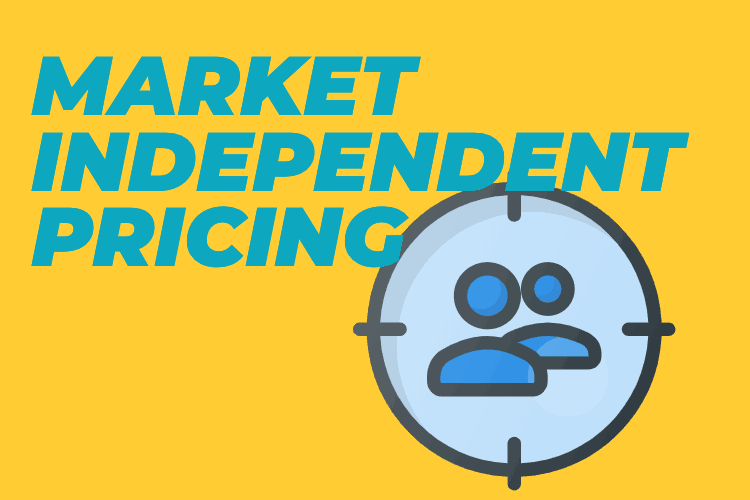
Market Independent Pricing is a pricing method that only accounts for market conditions. Of all the pricing methods, this is probably the simplest. Essentially, you just price each item on your menu based on your competitors.
For example, let’s say you want to price a cheeseburger using this method. You notice that your competitors are all charging between $10 and $12 for an 8oz cheeseburger. All the restaurants serving burgers in this range are doing very well and appear to be selling a lot of burgers.
You decide to split the difference and price your cheeseburger at $11. The cool part about Market Independent Pricing is that you know precisely where your pricing stands against your market.
The problem here is that simplicity creates risk. The $11 price point is risky because you are deciding on a price before figuring out recipe cost. Once you go to build the recipe, the burger might end up costing $6.50 in ingredients, meaning that your food cost on this item is 59.1%.
As you can see, Market Independent Pricing is very risky, especially if the person pricing the menu is not working in close collaboration with the person acting as the chef and designing it.
Best For: Quickly determining prices without a calculator. Nerves of steel are required!
Market Minus Pricing
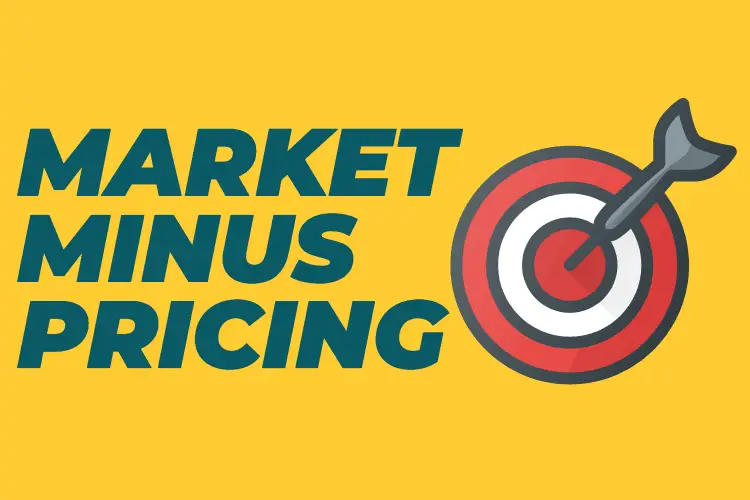
Market Minus Pricing is undoubtedly the best way to determine menu prices. This method combines Cost Plus Pricing and Market Minus Pricing to create a happy medium. Consider it the goldilocks of pricing methods.
To determine the price of an item using the Market Minus Pricing model, you start by looking at what the market will pay for the dish you are trying to price.
Let’s use a cheesesteak as an example. After research, you conclude that the price range of cheesesteaks amongst your competitors is $8 – $11 and that the perfect price point for a cheesesteak in your restaurant is $10. Now, work backward and build the recipe to 25% of that ($2.50) using the best ingredients and most substantial portions possible.
You might find that to serve a sandwich you are happy with, you have to go to 30% ($3 ingredient cost). Conversely, you might find that you can build an excellent cheesesteak for 22% ($2.20). Aim for 25 to 30 percent. It is common to have to compromise on ingredients to bring the price to a level that customers are willing to pay. In the end, like all things, it’s a balancing act.
When using Market Minus Pricing, expect to find yourself tweaking each recipe until you have the food cost balanced exactly how you want it. In the end, you will come up with a price that customers are willing to pay and also profitable.
The bottom line is that the price range can vary significantly from market to market and concept to concept. A cheesesteak can cost as little as $4 for a small, budget version up to $120 for a luxury steak in a lavish atmosphere. As long as the customer is willing to pay it, then the price doesn’t matter.
Best For: Just about everyone!
Demand-Based Pricing
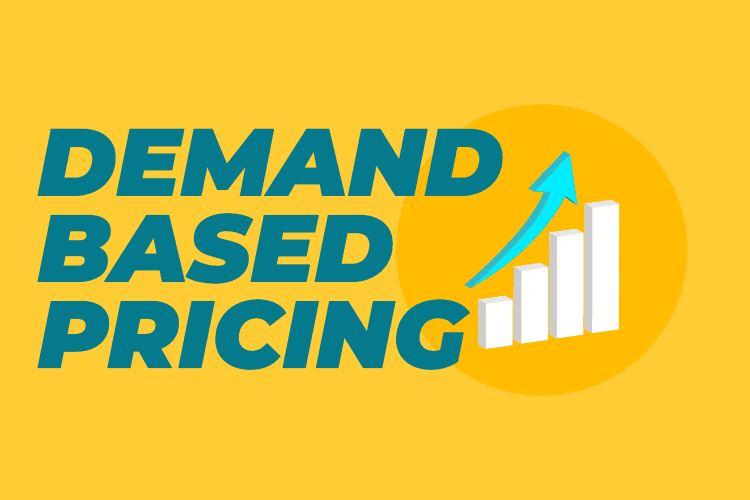
Demand-based pricing is rarely used in a traditional restaurant, but is still worth mentioning as it might apply to a select item on your menu. This pricing model relays solely on supply and demand.
The best way to illustrate this is with the price of popcorn at a movie theater. Movie theaters can charge WAY above cost because they are the only supplier of popcorn at the movie theater. Demand-based pricing is also demonstrated at the concession stand of a ballpark. There is nothing quite like paying $25 for a hot dog and a bottle of water!
As I said, this model will rarely be used in most restaurants. One example where this model might be used is if you are the only supplier of a particular item.
For instance, let’s say you are the only restaurant in town that offers fresh oysters. You are the only supplier, so as long as people are seeking out fresh oysters (aka demand), you are going to be able to price higher than the cost would dictate. Exceeding the market price for an average plate would be irrelevant in this scenario because there is no competitor for oysters. You have great control here.
The larger the distance between you and the next restaurant serving fresh oysters, the higher you are going to be able to inflate the price — simple supply and demand.
Best For: Restaurants that Control all Supply in their market
Other Considerations
Now that we spent some time reviewing the four primary methods to determine menu prices, we need to talk about other considerations that need to go into prices regardless of what model you use. Some of these considerations were mentioned above, but I will dive deeper into them below.
Pricing Align with Concept & Image
The prices on your menu need to align with both your concept and image. Customers enter high-end fine dining restaurants expecting to pay and get more than they would at a casual dining establishment.
Regardless of what pricing method you use, serving food below market price in a fine dining restaurant is only leaving money on the table. Conversely, pricing food (regardless of quality) in a casual or fast-casual restaurant will be perceived as an expense.
Aside from ensuring your prices reflect your aesthetics, be sure to make sure they match the surrounding neighborhood. A high-end neighbor filled with million-dollar estates would be a poor spot to open a family dining “all you can eat for $10” buffet.
Your restaurant image should even show in the way you display menu prices. A family restaurant focused on middle-class customers will set their prices just below the nearest dollar versus a more upscale restaurant would just stick to the whole number — for example, $9.99 instead of $10.
Balanced Menu Mix

Not every item on your menu is going to be equally as profitable. Dishes like appetizers and desserts will have a much lower food cost (10 to 20 percent) than entrees featuring expensive cuts of meat (which can be as high as 50 percent). Remember that the end goal is 25 to 35 percent and work to balance your menu so everything, when averaged together, ends up in that range.
The trick is to balance the sales mix of each item so that the end food cost hits your desired goal. Forecasting the sales of each item before you open is incredibly tricky, so this is no easy task. Finding the perfect balance takes time and patience but will make cost balancing worlds easier once you are open and achieving consistent sales month after month.
Ingredient Cost Volatility
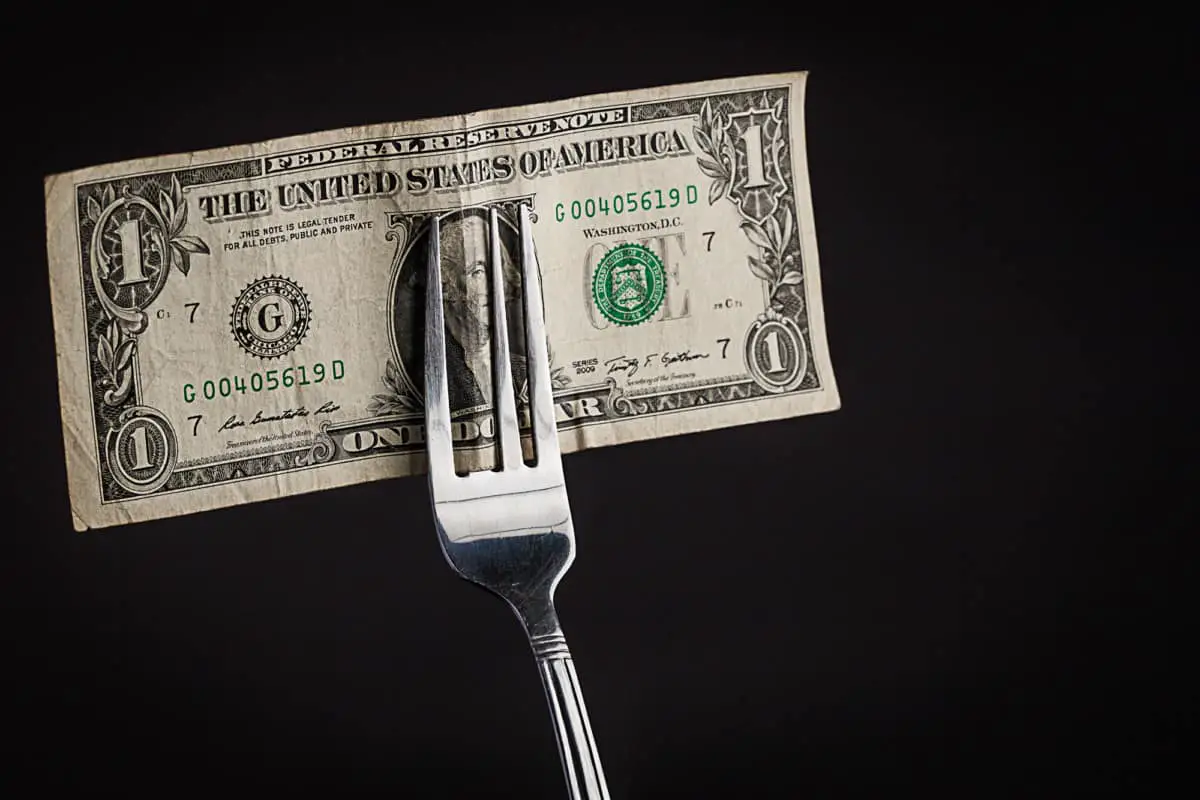
Having a balanced menu also means diversifying ingredients. Food markets are fluid and change with the season, weather, and other seemingly unrelated current events.
If an ingredient you employ in half your dishes triples in price, you might find yourself in real trouble. If that ingredient is only used in one dish, your risk is minimalized. Of course, a good restauranteur tries to cross- utilize ingredients throughout the menu to limit the number of products in inventory, so this again requires balance.
Markup for Delivery and Credit Cards
Using a third party delivery service is non-negotiable for most restaurants and add a nice increase to overall sales.
Unfortunately, the fees charged by these third-party companies like Grubhub, UberEats, Postmates, and Door Dash often make delivery unprofitable. In some cases, you might even be taking a loss. The fees vary widely not only from company to company by also from location to location.

To avoid this, adjust your menu prices to account for whatever fees the delivery company charges you.
Expect to feel sticker shock when you first see the prices after they are adjusted for delivery fees. There is a reason delivery is so popular right now: people are willing to pay a premium price for it.
Even if you feel like the prices are too high, I promise you that people will pay for it. You always have the option of pricing it below the adjusted rate that you determine in the calculator to help drive early sales.
The hefty credit card fees can put a severe financial strain on your business. With credit card usage increasing at a rapid pace, you should factor in the fees and price your food under the assumption that everyone is paying with a credit card. Whatever you do, do NOT offer different prices for different payment methods as it comes off incredibly unprofessional.
Calculating Recipe Cost
Recipe cost is the total cost of all ingredients in a given menu item. With recipe cost, you can figure out your ideal food cost for that item by dividing the recipe cost into the menu cost. The other key metric you can derive from recipe cost is Penny Profit.
Penny Profit on a menu item is the gross profit you make every time you sell that dish. To calculate Penny Profit, subtract the menu price from the ingredient cost. Knowing this information is helpful because you can more easily identify your most profitable items and thus put them in a position to sell at a high volume through menu location and suggestive selling.
Recipe cards store all details about a given recipe. They should include ingredients, portions, serving specifications, ingredient cost, ideal food cost, and penny profit along with any other information that might be relevant to a particular dish.
You should have recipe cards made up for every item on your menu. Most of the good restaurant management software has this built-in for you, but you can use a simple excel spreadsheet to store and calculate all this information for you as well. Below I made a quick example that you can use if you don’t have the software.
Analyzing Your Competition
Before you begin the process of pricing a menu, you’re going to need to complete a competition analysis to help better understand your location and target customers.
The first step in analyzing your competition is to identify your direct competitors. Your direct competitors should be within about 10 minutes drive of your restaurant and offering a similar menu and price point to your establishment. Ideally, you will identify 2 to 5 direct competitors.
Next, grab a menu from each of the restaurants you identified as competitors. Choose 5-8 similar items that you all have on your menu. Note the price of each item in each location and record it in a chart. For example:
| Restaurant A | Restaurant B | Restaurant C | |
| Lemonade | $2.20 | $1.99 | $2.50 |
| Chili Nacho Appetizer | $11.25 | $9.99 | $12 |
| Cheeseburger | $11 | $10.50 | $12.99 |
| Pork Tenderloin Entree | $17 | $15 | $20 |
| Chocolate Cake Slice | $4 | $6 | $7.50 |
If you want to be detailed with your analysis, it is going to cost you. Visit each restaurant to see how your version of a particular item compares to your competitors. If you are using higher quality ingredients or serving larger portions than your competitors, then your pricing should obviously reflect it.
Having an analysis of your competition like the one above allows you to create a price range. For example, when pricing burgers on your menu, your price range would be $10.50 to $12.99. This is of particular use when using Market Minus Pricing.
Managing Food Cost
Building a balanced and profitable menu is all well and good, but it will be of no use if you can’t control your food cost once you are up and running. Start taking control of your food cost with these best practices:
Standardized Recipes: All menu items should have specific recipes that explain the exact portioning requirements. This will allow you to teach your team how to make the dish as you envisioned, both in appearance and profitability.
Portion Control: You have a standardized recipe; make sure your team adheres to it!
Shop Around: Pit each vendor against each other to negotiate the best deals possible. Recheck regularly to ensure you are still getting the best price possible.
Inventory Management: Weekly inventory is a necessary evil. It allows you to spot where you are missing the mark and correct course quickly. Consider a daily inventory of critical items if food cost is a particular problem for your restaurant.
Waste: Be it a mistake in the kitchen or in front of the house, waste hurts your food cost. The best thing you can do is track all waste and then adjust your systems and training to prevent it from happening again in the future.
Theft: Simply do not tolerate it. If someone steals from you once, it will continue and most likely get worse. To deter theft in the first place, allow your employees to eat for free (within reason of course). Content and well feed employees are far less likely to steal!
